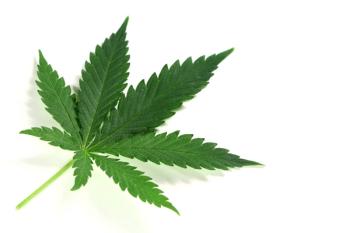
Cannabis Science and Technology
- July/August 2023
- Volume 6
- Issue 6
- Pages: 16-21
Integrated HVAC Systems for Cannabis Cultivation Have the Lowest Life Cycle Cost

This column reviews a study published by cannabis industry design and construction professionals and describes the impact of energy regulations affecting heating, ventilation, and air conditioning (HVAC) system selection in cannabis production facilities.
Purpose-built equipment for precise indoor cultivation climate control is an emerging technology. There are several approaches used by cannabis growers and preferred by designers and installers. Regulators have also crafted policies that require minimum efficiency ratings for HVAC processes, such as dehumidification. In some US states, cannabis regulations call out specific energy-efficient options, such as heat pumps. In most cases, ductless “mini split” or variable refrigerant flow (VRF) systems need supplemental dehumidification equipment to manage grow room heat loads. Energy models demonstrate that integrated systems outperform heat pump systems using standalone dehumidifiers for both annual energy use and life cycle costs.
High-quality cannabis flower production requires precise management of target environmental conditions for cultivation spaces and drying rooms. Heating, ventilation, air conditioning, and dehumidification (HVACD) systems are critical for controlling air temperature and humidity levels (1).
A 2021 Southern California study found that HVACD systems account for more than half of the electricity consumed at indoor cannabis cultivation facilities (2). Energy demand from climate control systems is greater than even sole-source horticultural lighting systems (see Figure 1).
There are diverse types of equipment that can be used to cool and dehumidify grow and dry/cure rooms. The most common approach is a decoupled heating, ventilation, and air conditioning (HVAC) system with independent cooling equipment and dehumidification equipment. While this is the lowest first-cost option, these systems may not be the most energy-efficient and can have higher life-cycle costs than other HVACD options suitable for cannabis production, such as integrated ducted systems or hydronic HVACD systems (3). To address the high energy consumption of typical HVACD equipment for cultivation, policymakers in some states have enacted requirements for HVAC systems serving cannabis cultivation facilities to meet minimum efficiency standards. Some requirements address standalone dehumidification equipment performance in L/kWh, which describes the amount of moisture removed per unit of electricity consumption. Because indoor cultivation involves dynamic environmental conditions, equipment needs to modulate to maintain target setpoints, but the testing standards that rate the efficiency of dehumidification equipment are designed for 80 °F/60% relative humidity (RH) for human-occupied spaces and there are no standards defined for controlled environment agriculture.
In Illinois, HB 1438 requires cannabis grow operations to use “high-efficiency ductless split HVAC units, variable refrigerant flow HVAC units or other more energy-efficient equipment.” But heat pump systems are not necessarily the optimal system for indoor cannabis cultivation. Desert Aire, an HVACD system manufacturer, shares that while the efficiency of cooling equipment may be high, it must run more often to offset the heat generated by dehumidifiers removing moisture from grow rooms (4).
Crafting regulations for process equipment is generally done when the industry has enough data to understand baseline equipment performance and the potential energy savings of high-performance systems. Since research in the cannabis industry has many barriers and process equipment for cultivation is evolving quickly, regulators sometimes do not have enough information to reference for ]efficiency requirements.
To close the gap, expert professionals in the architecture, engineering, and construction community are conducting independent research and sharing findings publicly to inform growers of the life cycle impacts of HVACD system selection and guide the next generation of cannabis regulations affecting these systems.
The Cultivation HVACD System Comparison Study by Anvil Agronomics, Anderson Porter Design, and Zartarian Engineering published in 2023 compares three systems (5):
- Ductless "mini split" heat pumps with standalone dehumidification equipment
- Variable refrigerant flow (VRF) heat pump systems with stand-alone dehumidification equipment
- Packaged purpose-built "integrated" ducted HVACD systems
The HVACD systems were modeled using Carrier Hourly Analysis Program (HAP) V5.11 to simulate a full year of system operation using standard operating procedures for cultivation that include light-emitting diode (LED) lighting, two tiers of flowering canopy, and lights on targets of 82 °F and 58% RH.
The space performance of a decoupled HVACD system (using mini splits) is demonstrated in Figures 2 and 3. Figures 2 and 3 show grow room space temperature and relative humidity for one photoperiod. The cycling of the HVACD systems results in dynamic conditions that do not maintain a tight range for environmental setpoints; the study notes that “temperature stability is +/- 2.5 degrees F…and there is a swing of +/- 10% RH throughout the day.” Figure 2 details that modeled decoupled systems’ space temperature ranges from around 80 °F to 86 °F and Figure 3 shows RH ranges from about 42% to 60%.
The space performance of an integrated HVACD system is demonstrated in Figures 4 and 5. Figures 4 and 5 show grow room space temperature and relative humidity for one photoperiod. The integrated nature of the HVACD systems results in more stable conditions as they can maintain a tight range of environmental setpoints. The study notes that “temperatures vary by less than +/- 1 degree F and RH varies by +/- 2.5% RH once the room reaches equilibrium after lights off.” Figure 4 shows that modeled integrated systems’ space temperature ranges from around 79 °F to 80 °F and Figure 5 highlights RH ranges from about 68% to 70%.
Energy modeling results in Table I show that the integrated HVACD system has the lowest annual energy use of the three systems analyzed, 14–16% better than the heat pump systems. Decoupled systems are also not under a single point of control, which wastes energy. Desert Aire notes that decoupled systems constantly overshoot set points as they try to balance temperature and RH, which leads to extended run time, more energy usage, and constantly changing vapor pressure deficit (VPD) which stresses plants. The integrated system also had the lowest construction costs and the lowest maintenance costs.
The findings of the study suggest that policymakers writing energy regulations for cannabis HVACD systems should consider allowing integrated HVACD systems as a pathway for compliance that offers robust and cost-effective energy savings. The authors of the study shared that (5): “the industry is not mature enough for regulations to be developed around the process of climate control in cultivation spaces. Cultivation tactics are diverse and ever evolving, and new equipment is becoming available as manufacturers address this emerging market. There are several different system configurations that can be successful, and we are still collecting the data on which ones perform best over the long term.”
States encouraging energy-efficient equipment for cannabis cultivation can support research by funding utility studies to investigate the energy savings potential of emerging technologies. For example, energy engineers from Energy Resources Integration (ERI) are studying energy-saving HVACD systems for indoor and greenhouse cultivation for the natural gas utilities in California (6).
If you are planning a new construction project or retrofitting an existing facility’s HVAC equipment, reach out to experts at ERI for design-phase guidance or other energy-related services (7). Stay tuned for the next study from Anvil Agronomics, Anderson Porter Design, and Zartarian Engineering which is comparing hydronic HVACD systems (using chillers and boilers) against integrated ducted HVACD systems (8–10).
References
- Schimelpfenig, G., HVACD Controls for Plant Health, Product Quality, and Energy Efficiency in Cultivation and Drying Processes, Cannabis Science and Technology, 2020, 3(8), 14-16.
https://www.cannabissciencetech.com/view/hvacd-controls-for-plant-health-product-quality-and-energy-efficiency-in-cultivation-and-drying-processes . - Market Characterization of Indoor Cannabis Cultivation, https://www.etcc-ca.com/reports/market-characterization-indoor-cannabis-cultivation.
- Best Practices Guide: HVAC for Cannabis Cultivation & Controlled Environment Agriculture,
https://catalog.resourceinnovation.org/item/best-practices-guide-hvac-cannabis-cultivation-controlled-environment-agriculture-407516 . - Growers in Search of HVACD Efficiency,
https://www.desert-aire.com/news/growers-search-hvacd-efficiency . - Cultivation HVACD System Comparison Study,
https://issuu.com/anderson-porter-design/docs/230120_cultivation_system_comparison_study . - CEA and Greenhouse HVAC Market & Technology Study,
https://www.etcc-ca.com/reports/cea-and-greenhouse-hvac-market-technology-study . - Energy Resources Integration,
https://www.eripacific.com/ . https://www.anvil-ag.com .https://www.andersonporter.com .- Zartarian Engineering: Experts in Precision Agriculture,
https://www.zartarianengineering.com/ .
About the Columnist
Gretchen Schimelpfenig, PE, is a Senior Energy Engineer at Energy Resources Integration, LLC where she implements energy efficiency programs and provides direct consulting services. She is the former Technical Director of the Resource Innovation Institute and manager of the organization’s Technical Advisory Council. She authored RII’s Lighting, HVAC, and Facility Design & Construction Best Practices Guides for Controlled Environment Agriculture and the Lighting, HVAC, and Controls Best Practices Guides for Cannabis Cultivation. She has worked with partners like the University of Vermont to optimize commercial and industrial buildings, including greenhouses and controls systems used for academic research on hemp and other cultivars. She has a B.S. in Architectural Engineering from the University of Wyoming and an M.S. in Civil Engineering from Stanford University. She is a licensed Civil Professional Engineer in California and Vermont.
About the Co-Author
James E. Megerson, PE. With over 35 years of experience in the design and construction of building systems, Jim Megerson leads Anvil Agrinomics while keeping current with issues of building systems design, including indoor controlled environments for agriculture, energy efficiency standards, and green building practices.
About the Co-Author
Mike Zartarian grew up in an agricultural-based community and developed a deep respect for the people, plants, animals, and systems of small-scale production. He earned his BS and MS in Electrical Engineering from Northeastern University and spent the first portion of his career in product development and research roles in consumer and industrial electronics.
About the Co-Author
Brian D. Anderson is a Co-Founder of Anderson Porter Design, which is a leading architecture firm in the cannabis industry. He is a highly experienced architect with a passion for creating innovative and beautiful spaces that work in tandem with complex systems and engineering. Anderson is an expert in this field, having developed a deep understanding of the unique challenges and needs of the cannabis industry. He is experienced in working with local, state, and federal regulations to ensure that projects are built to the highest standards and compliant with all applicable laws. He has worked in the cannabis space for almost a decade designing upwards of 45 cannabis cultivation facilities and approximately 35 retail stores in 23 states. Brian has a master's degree from Harvard and a BFA and B.Arch from RISD.
How to Cite this Article
Schimelpfenig, G, Megerson, J., Anderson, B., Zartarian, M., Integrated HVAC Systems for Cannabis Cultivation Have the Lowest Life Cycle Cost, Cannabis Science and Technology, 2023, 6(6), 16-21.
Articles in this issue
over 2 years ago
Why Is Everything Distillate?over 2 years ago
2023 Cannabis Science Conference Fall AgendaNewsletter
Unlock the latest breakthroughs in cannabis science—subscribe now to get expert insights, research, and industry updates delivered to your inbox.




